Find your happiness in corn
Today, the VNIS team is successfully working on developing highly productive hybrids of sunflower, corn, winter rape, rye varieties, winter wheat, barley, spelt, confectionery sunflower, sorghum, sugar and fodder beet, and in recent years has also started working on sugar corn. “Why?” I ask Yaroslav and Myroslav Pariy, the institute's directors.
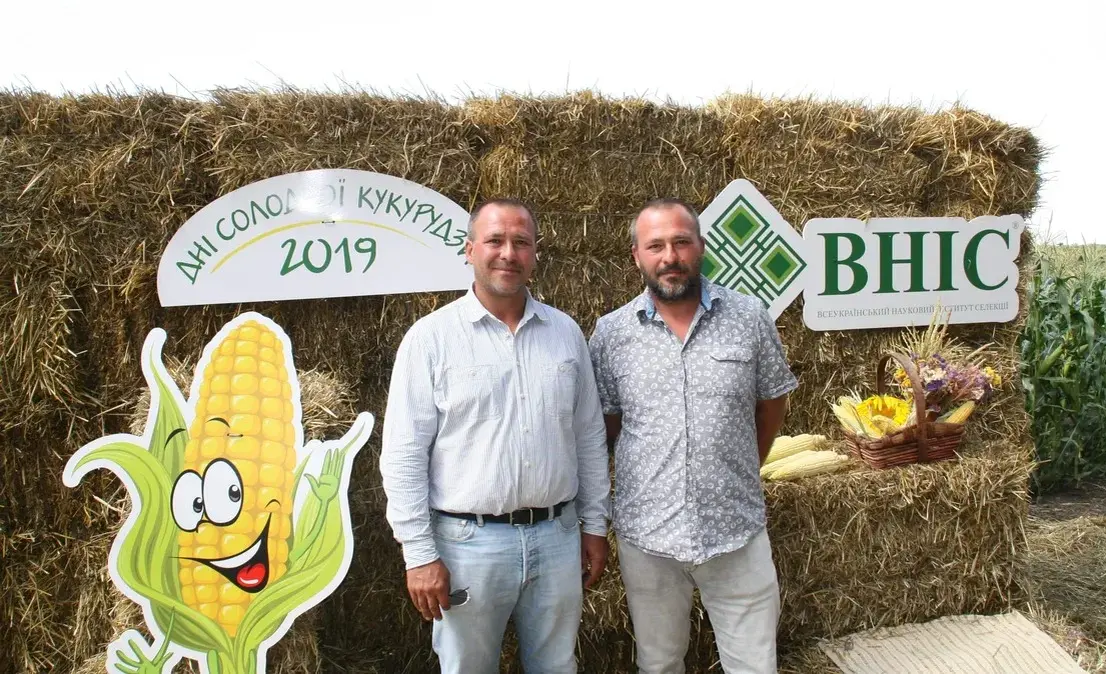
A family business
- Every person has a hobby in addition to work, and we found it in sweet corn, which is the area that gives us the most pleasure,” explains Myroslav, ”but it turned out that this crop is also quite interesting in economic terms. The market for sugar corn is growing, not only in South America but also in Ukraine, Russia, Kazakhstan, China, and India, and this product is confidently moving around the world because it is tasty, nutritious, and healthy. It so happened that there are no centers in Europe and the CIS that would be engaged in breeding sugar corn, and therefore the seeds of most hybrids are imported either from the US or sold by companies licensed by these companies, and the price of such seeds is quite high, within $2 thousand per sowing unit. The Ukrainian market is quite large - about 60 tons of seeds, if you multiply each sowing unit (10 kg) by $2 thousand, you will get a solid figure. But our advantage is that we offer seeds of the same quality at a price four times lower. Today, our market share is 5-7%, but I hope that in some time we will increase it to 40%. Our advantage is also that we are on the spot, our seeds are ready in October, while American seeds arrive in March. Moreover, we are not going to lag behind in terms of technology for creating varieties, we cooperate with Chileans in this regard and will soon enter the South American market with joint products, that is, we will create hybrids close to the socio-cultural characteristics of South America, which are also present on the market of Uzbekistan and Europe, this year we will simultaneously register two new hybrids in Ukraine and the EU countries...
- “In our work we use the most modern achievements of science,” Yaroslav adds to his brother, “we have three laboratories: one for molecular markers, the second for biotechnology, and the third for testing the quality of seeds, and we produce our own seeds of our varieties and hybrids. We also have our own line for processing parental forms, our own trademark, to create varieties we use the capabilities of the southern hemisphere, using molecular markers, speed up the breeding process, apply the technology of immature germs, that is, in fact, we can create new forms and hybrids in two years, hybrids are tested in 10 locations in Ukraine, we have 15 thousand experimental plots for each crop, and we also conduct tests in Eastern Europe, Serbia, and Romania. We cooperate with many foreign breeders and exchange materials. We have 20 sunflower hybrids in the state register, 12 corn hybrids, 5 winter rape hybrids, 5 sugar corn hybrids, and 10 winter wheat varieties...
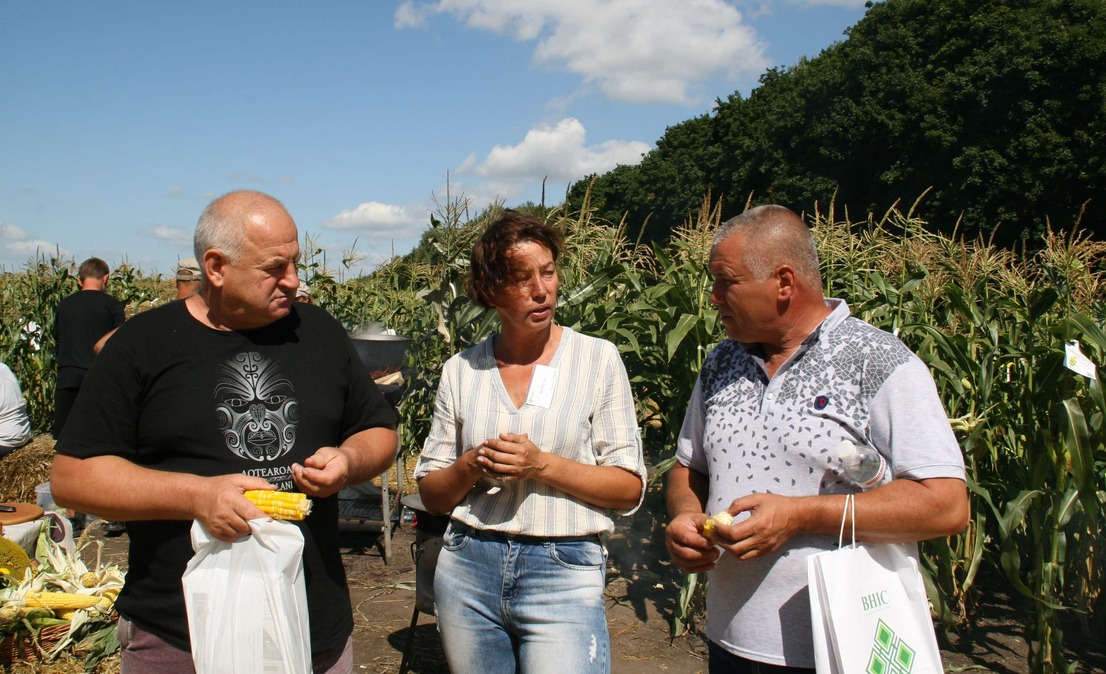
A lifeline for farmers
Farmers' interest in sweet corn was enormous at this year's Sweet Corn Days in the experimental fields near the village of Leonivka in the Kyiv region. The event was attended by hundreds of farmers who see this highly profitable crop as a lifeline that can keep them afloat and contribute to the further development of their farms. How profitable is this crop? I asked two farmers from the Kaharlyk district, Hryhorii Haidak and Serhii Shostak, this question. They told me that this year they sowed it for the first time on an area of 2.5 hectares. They used four hybrids: Larus, Imitator, Mother of Dragons, and Vega. They say they missed the mark a bit with the sowing, waited a long time for the weather by the sea, sowed in May, and so the harvest ripened a month later, when the price dropped from 8 to 3 hryvnias. But there are still heads of cabbage in the field, so there is hope that prices will rise in the fall. Now they will know that sugar hybrids should be sown in four waves, starting immediately after the Annunciation, to ensure a continuous conveyor belt. But they liked this crop because no other grain will give such a profit as this one. From each hectare, you can get about 150 thousand UAH of net profit. Wow! It turns out that this is not sweet corn, but golden corn!
The organizers talked about the peculiarities of hybrids and their cultivation technology, and answered many questions. A tasting competition was held. Participants tasted ears of hybrids, filled out questionnaires, gave ratings, and the winner was determined. The winner was the Imitator. There was also a tasting of hybrids that were not yet known to the consumer, more than a thousand of them were presented in this field, they were marked with numbers, the guest chose the head of cabbage he liked, wrote out the number, gave it to the cook, which lasted no more than seven minutes, tasted and shared his impressions in a questionnaire. The leading forms were numbers 65 and 90, 135. In this way, breeders identified promising hybrids, and if people are interested in them, it makes sense to work with them further.
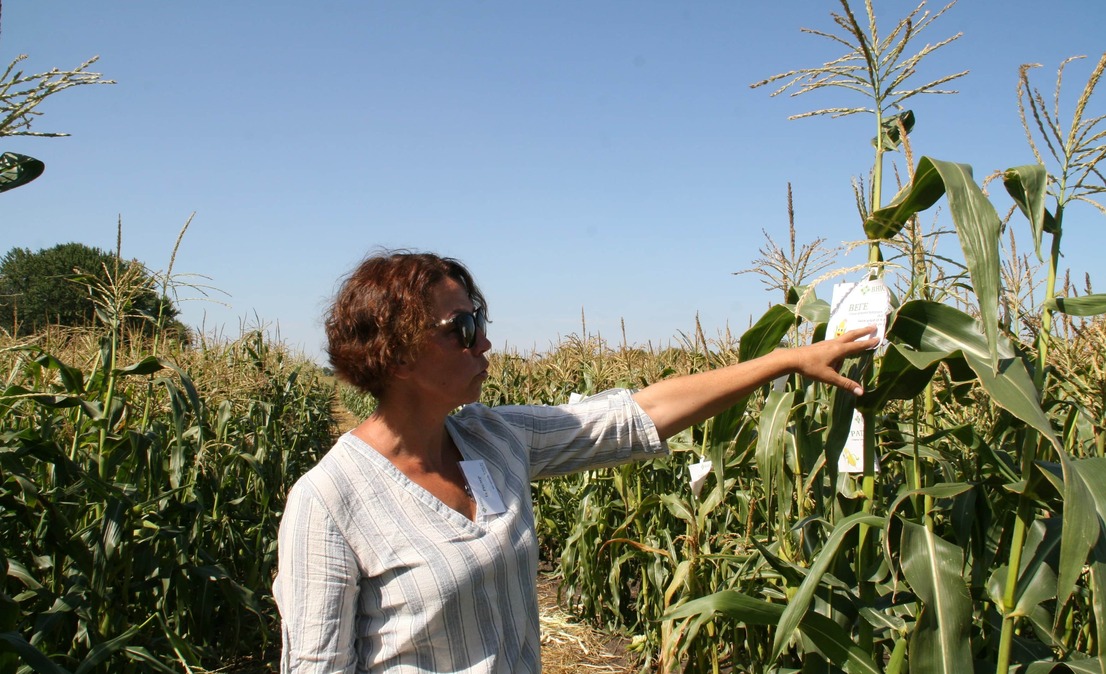
From idea to finished product
According to VNIS researcher Iya Resler, work on a new sweet corn hybrid begins with a creative idea or project: what the future product should look like, what consumer characteristics it should have, then it is created, tested, protected, harvested, dried, and sold in stages. It is a pleasure to work because breeders feel the growing demand from farmers, those who tried to sow sweet corn last year on a certain area immediately double it, because they see the benefits of this direction. Another advantage is that VNIS's seed prices are much lower than those offered by well-known multinational companies. In addition, Ukrainian hybrids are not created and hardened overseas, but in different regions of Ukraine, i.e. they are adapted to our soil and climatic conditions and go through all stages of zoning. There are VNIS offices everywhere: VNIS-South, VNIS-West, VNIS-East, and the central TAC VNIS. The institute's specialists involved in this process have unique experience in growing sweet corn, which they are ready to share with farmers.
VNIS hybrids feel good in almost all regions of Ukraine, including the Forest-Steppe and Steppe, but there is a question of irrigation, as corn realizes its potential better in conditions of sufficient moisture.
- “We need to get a large, full cob so that it has formed grains and a full crown,” explains Ija Resler, “To do this, watering is needed at all stages of the growing season, especially when the panicle is in full bloom, and the cob, which is completing its formation in the leaf axils, has an unpollinated top at this time, so it is very important that pollen gets from the panicle to the pistil stigmas. Based on all the phases, a competent agronomist builds agricultural technology, stages of fertilization, additional watering, so as not to miss the most crucial moment of laying the cob and panicle in the phase of the third to fifth leaf, or in the period of 5-8 leaves, when the panicle is ripening... At all stages, you need to take good care of it, you need to understand its physiology, and finally, you need to love this crop.
- Is the technology of growing sugar corn significantly different from grain corn?
- Not significantly, but still different. Sugar corn is a more fragile creature than regular corn, and while the protection of grain corn is provided by a fairly wide range of products, it is much narrower for sugar corn. When selecting and applying pesticides, fungicides, or insecticides, you need to be very careful. For example, this year we tried Laudis, but it suppressed the sowing, so we had to wait for it to respond, while Acetochlor showed very good results, maybe an elementary mistake in using the herbicide at the wrong stage of plant development, and therefore it is necessary not only to study in detail the recommendations of the hybrid creators, but also to check them on test plots. We have started to regularly train farmers, where we discuss in detail all the nuances of the technology of growing sugar beet...
- What can its yield be?
- It is determined not in tons, but in cobs, because they are of interest to producers and consumers. It is best to calculate it on plots of one hundred square meters. At the sowing density we recommend, which is 65 thousand seeds per hectare and 670 seeds per hundred square meters, you can get 450-500 full-fledged heads of cabbage, with a head of cabbage weighing 180-200 g. The row spacing should be 70 cm, and the number of plants per linear meter should be 3.5-4.5. This allows each individual corn plant to take up enough space and develop a vegetative mass that allows it to eat properly. Such sparse sowing is important for each plant to set not one cob, but one and a half or two, with cobs located below and above the stem, from the level where the grain cob is located.
- Where can the farmer sell the products?
- When a farmer decides to grow this crop and turns to us for more seed, we always ask the question: do you have reliable sales channels? If we don't hear a confident answer, we connect them with wholesalers, retailers, and markets. We are not yet ready to cooperate with supermarkets; they are interested in producers who have created a conveyor belt and can supply products for a long period of time, have the capacity for sorting and cooling. There are wholesale buyers who sell heads of cabbage on beaches or in resort areas. We are trying to reach processing plants so that they can start creating a marketing vertical, i.e. grow their own cabbage to freeze or preserve it later. If the parameters of our hybrids do not satisfy processors because their lines are set up for a certain diameter or length of the head of cabbage, we are ready to adjust its genetics to meet their standards. In particular, we will negotiate with the Berezhany cannery, which already grows our hybrids without even knowing that we are their originators, about direct cooperation.
- If you compare your best hybrid with the hybrid of a well-known multinational company, what is the level of sugar, weight, and head shape?
- I have absolutely nothing against the gorgeous foreign hybrids that have won the market, but we want to create a Ukrainian product for Ukraine at a reasonable cost and with good quality, so our Larus is in no way inferior to foreign ones: sugar content is 24%, it is also at the level of the most worthy international positions in terms of cob size, number of rows of grain and diameter. In terms of cob fullness, the leaders are the Imitator, which entered the market this year and won the tasting at this year's festival.
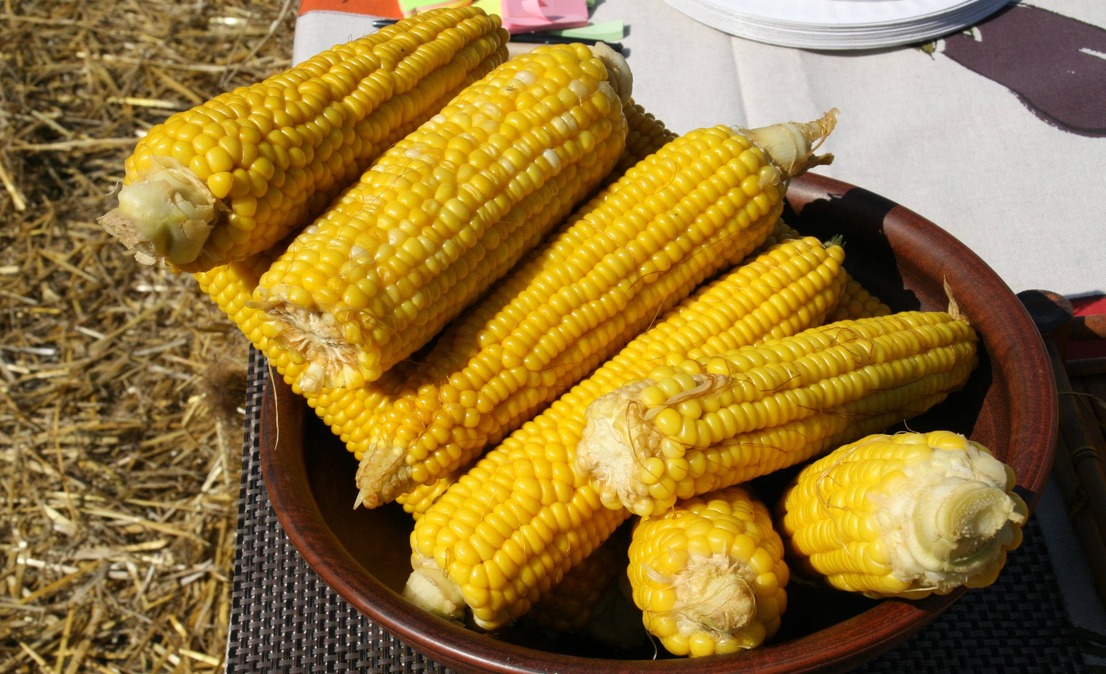
Larus, Bagration and others
- How long should the line of VNIS hybrids be to successfully compete in the market?
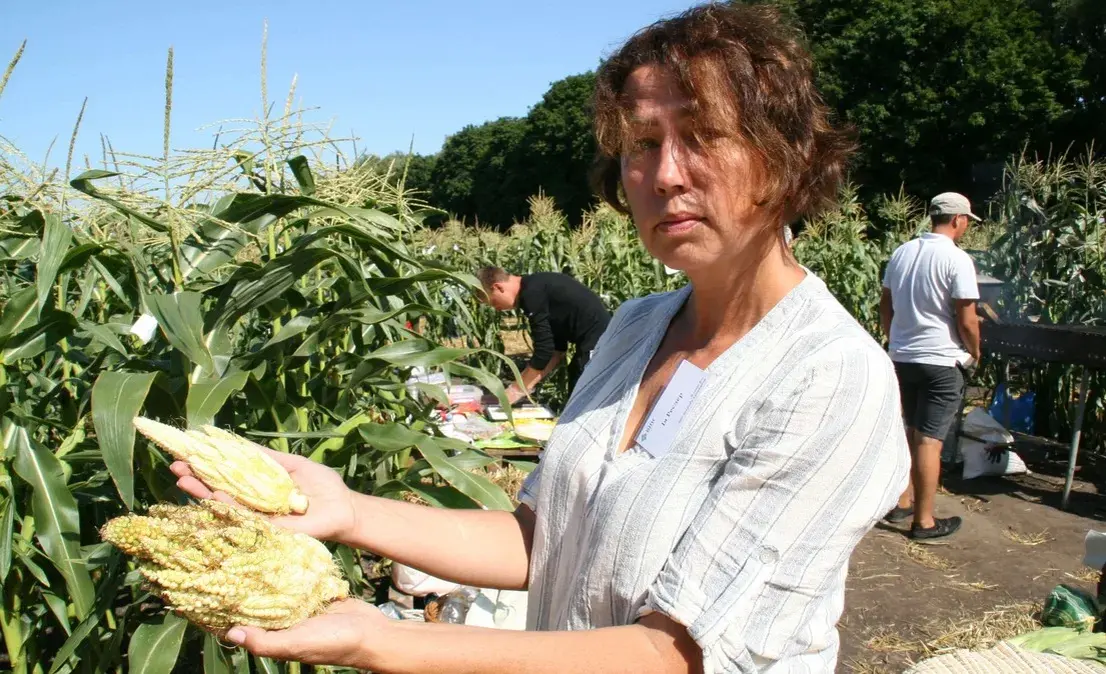
Diadema is a salad corn that has a moderate sugar content and a fresh, juicy salad flavor that resonates with the taste of green peas. It is consumed whole with the cob, harvested at the stage of milky ripeness, when it is just beginning to bloom, the grains are very soft and fragile, it can be cut or broken off in small cobs. This is our worthy response to their baby corn. Nutritionists have worked with our corn and concluded that it is corn with a so-called negative calorie content, which means that a certain amount of calories is taken into the body from eating this corn, but in order to digest it, the body burns even more calories, so the consumer is full but does not gain weight. We tried it on the grill and in vegetable salads. It's a great product.
In South America, any corn is called choclo, but we decided to call it a specific type of sweet corn, the fruit of the work of Chilean and our breeders. If we say that traditional sweet corn has a maximum of 18 rows of kernels, then in choclo we are dealing with 30 or even 40 rows. That is, this hybrid will have an extremely powerful yield. We sowed it for the first time this year, and we are distributing it to farmers for trial plots, and we are sure they will like it...
The second day of Sweet Corn in Leonivka ended with the victory of the Larus hybrid...

 Choose a country
Choose a country